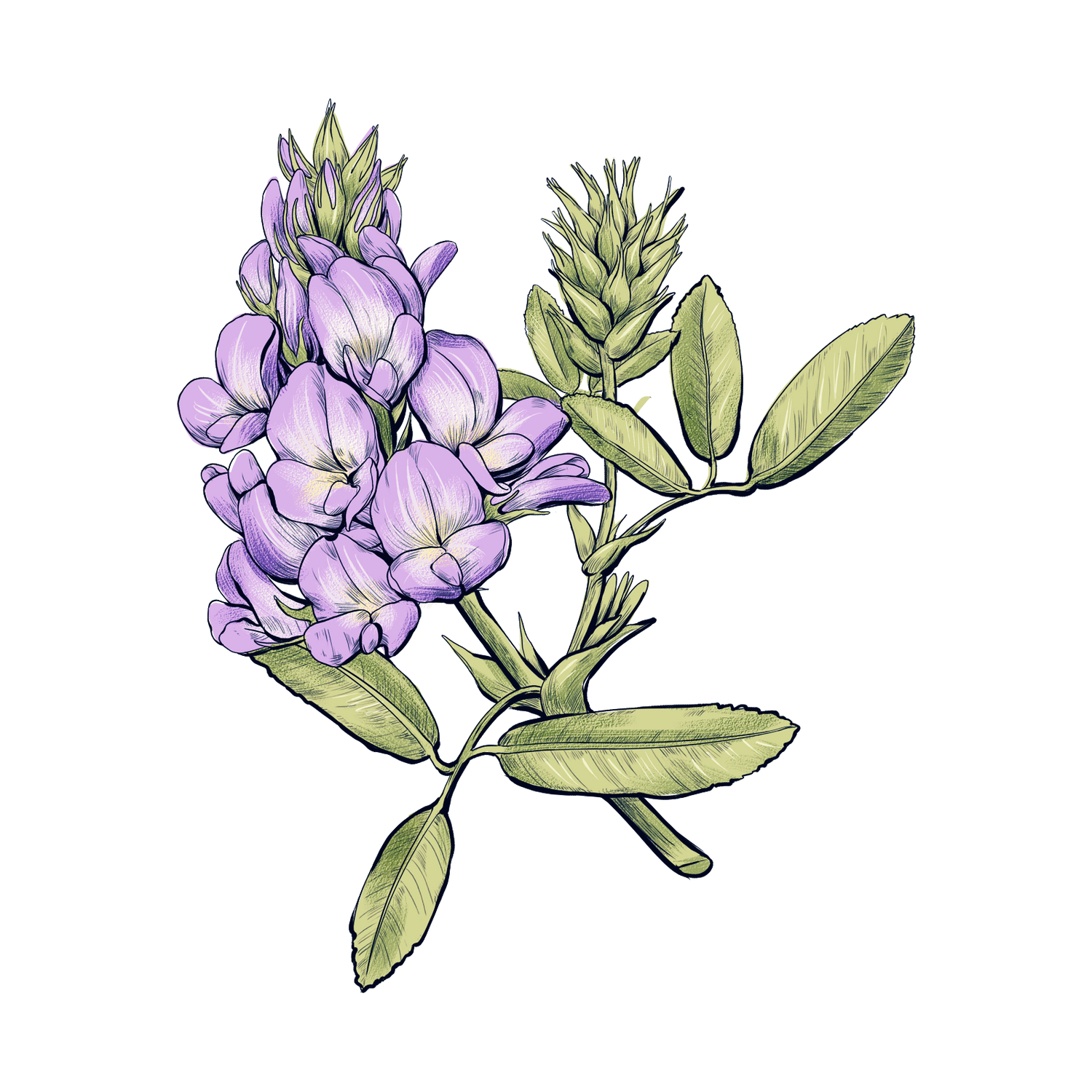
ALFALFA
Alfalfa is a highly nutritious plant that is said to boost milk supply, stimulate mammary gland growth and increase milk fat content.1 2 It can also promote vitality and improve water retention for mamas with postpartum edema. It can be taken both during pregnancy and after birth.
Fun Fact: Alfalfa is universally considered one of the highest-quality feed options for dairy cows because of its high level of protein, calcium and fiber.
Caution: Alfalfa is related to the legume and peanut families. Avoid using it if you have lupus or another autoimmune disorder.
Used in Cash Cow, Liquid Gold
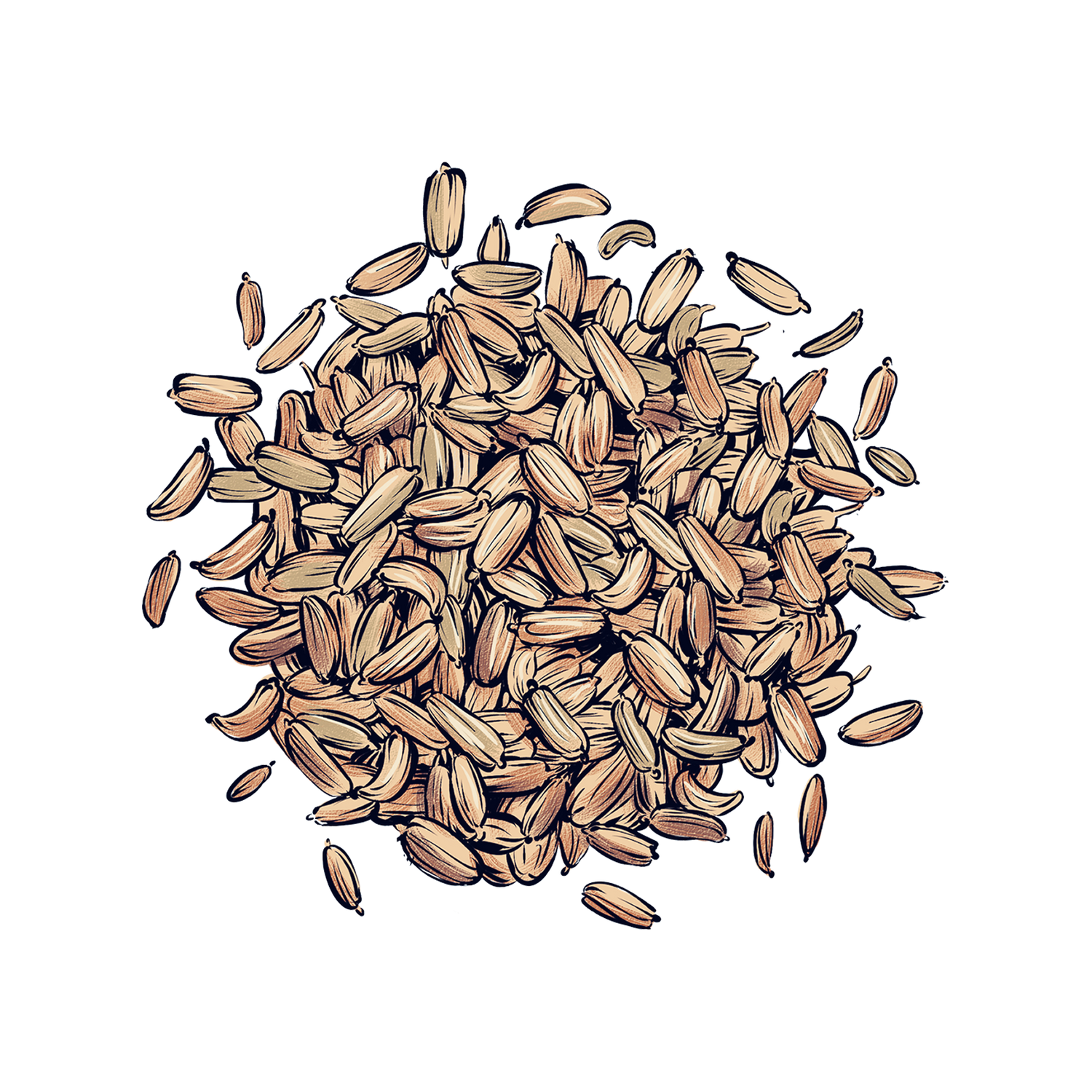
ANISE
Anise is an aromatic seed traditionally used in Europe to help improve the flow of milk and soothe colic or gassiness in babies.3
Fun Fact: Anise cookies are a traditional gift for new mothers in the Netherlands to ensure “bountiful milk.”
The Science: One study compared the volume of milk produced in lactating rats taking an anise extract compared to placebo. The anise group produced 68% more milk than the placebo group.4
Caution: Not safe for use in pregnancy. Do not use if you're allergic to anethole or plants in the Apiaceae/Carrot family.
Used in Lechita and Liquid Gold
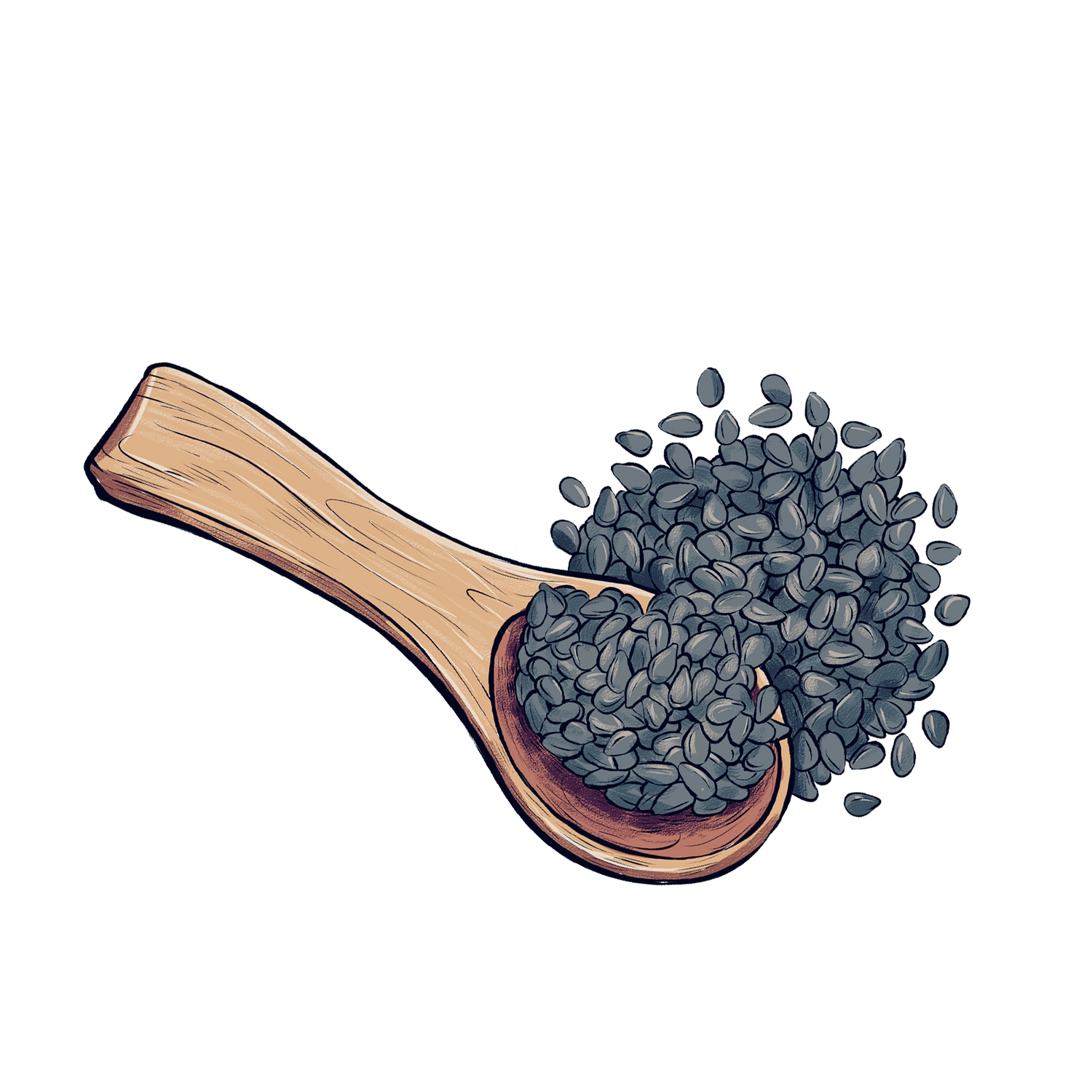
BLACK SEED
Black seed is a rich source of fatty acids and protein and has amazing insulin-sensitizing and anti-inflammatory properties.5,6 In animal studies, it has been shown to stimulate the release of prolactin (the major milk-making hormone), promote mammary gland growth and increase milk production.7
Fun Fact: It’s been dubbed the “remedy for all diseases except death.”
The Science: One study in lactating rats showed that the black seed extract group produced 37% more milk than the placebo group.8
Caution: Not safe for use in pregnancy. It can lower blood sugar – if you’re diabetic or hypoglycemic, consult your doctor.
Used in Pump Princess
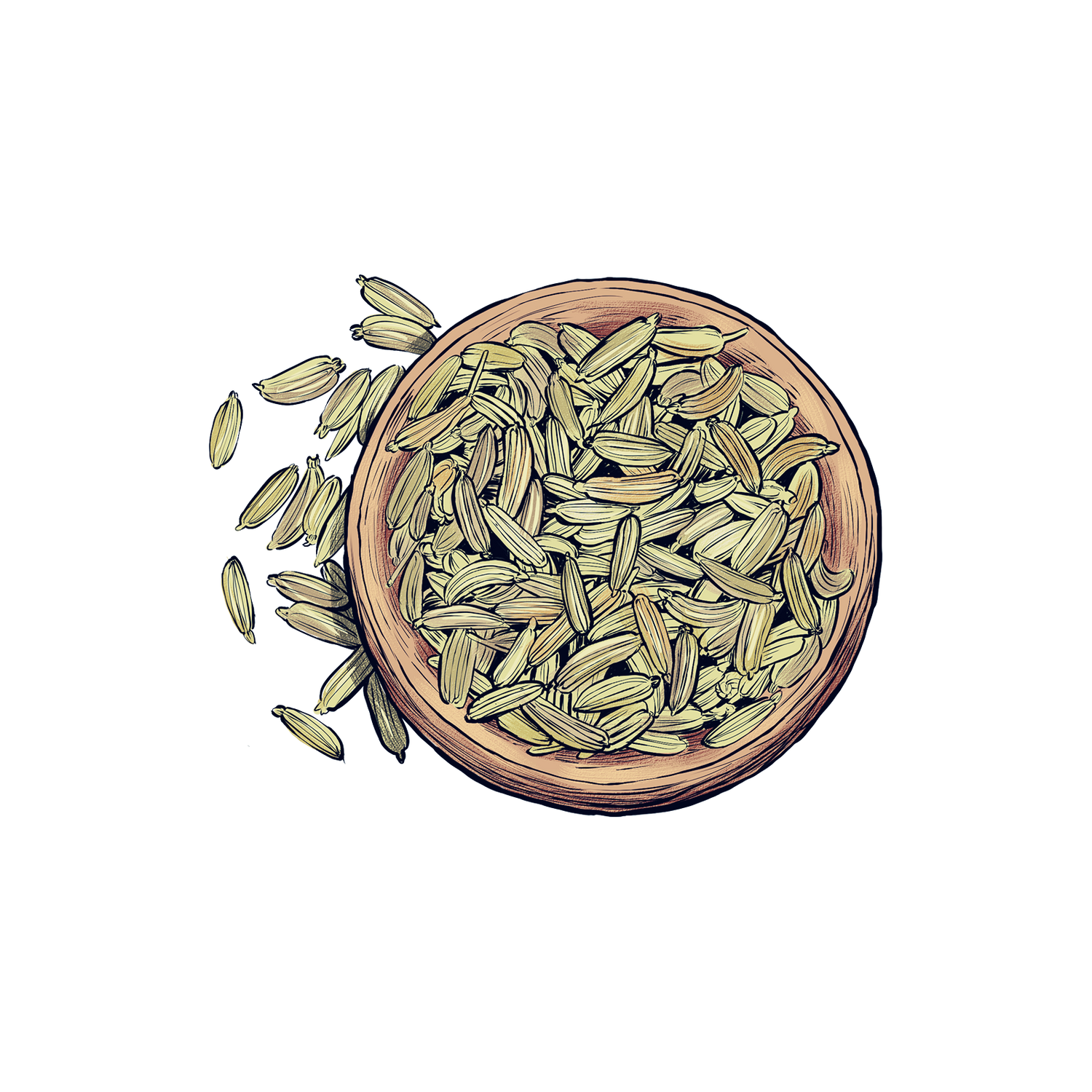
FENNEL
Fennel may work to promote milk production by acting as a dopamine receptor antagonist.9 It may have an oxytocic effect (may assist with milk let-downs) and also act as a digestive support for mom and baby.9,10
Fun Fact: Flasks of fennel tea are common in German postpartum floors.
The Science: In a randomized clinical trial, 78 nursing mothers received a herbal tea containing black tea and fennel seed or only black tea three times a day for 4 weeks. Fennel significantly increased the signs of breast milk sufficiency in infants, including weight, head circumference, the number of wet diapers, and the frequency of stooling.11
Caution: Not safe for use in pregnancy. Don’t exceed recommended doses. Do not use if you are allergic to anethole or plants of the Apiaceae/Carrot family.
Used in Lechita, Liquid Gold Milkapalooza and Pump Princess
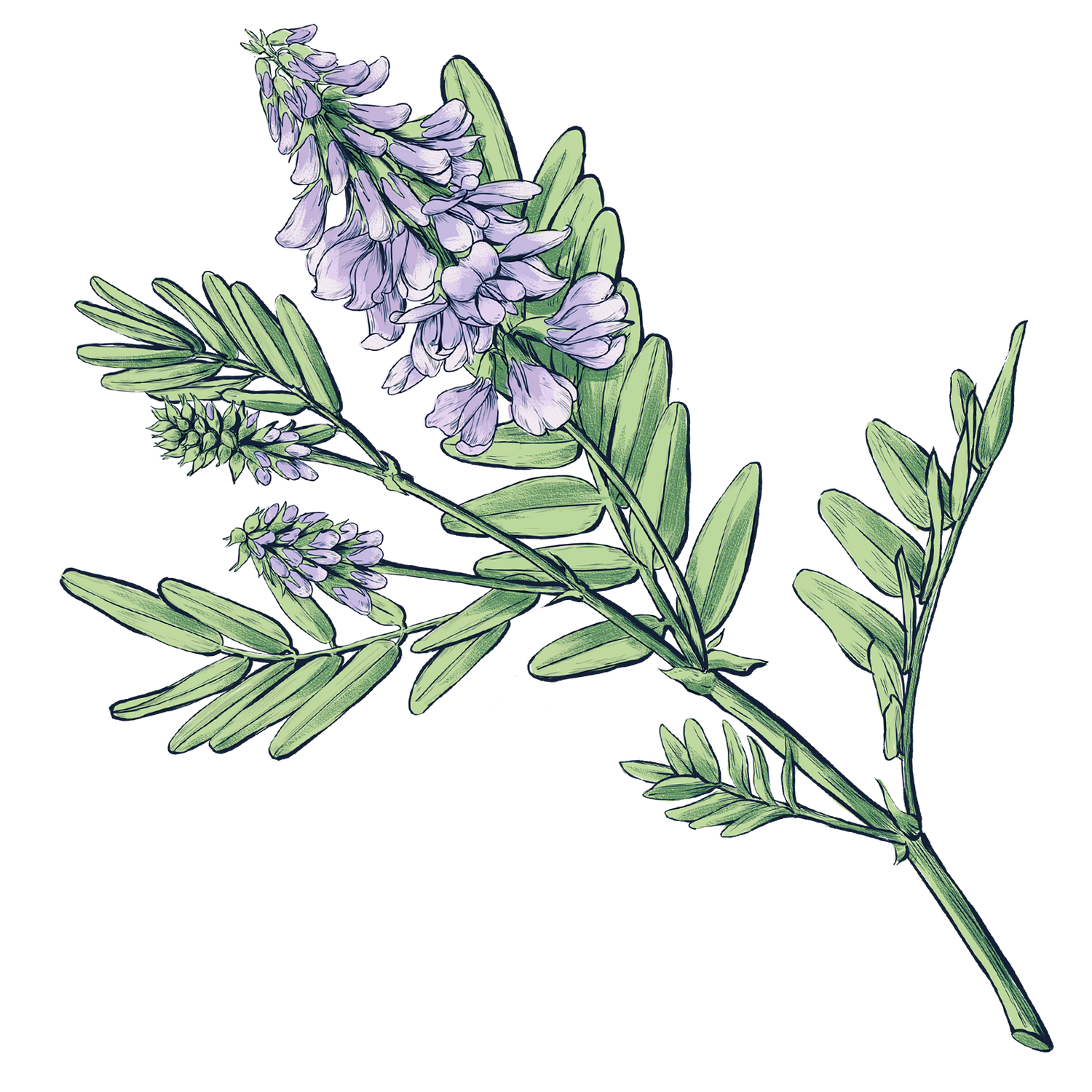
GOAT'S RUE
Goat’s rue has been widely used in France since the late 1800s when it was discovered to increase milk production in cows. It has been shown to stimulate mammary gland growth so it may be helpful for mothers with insufficient glandular tissue. It may also have a positive effect on insulin sensitivity, and is thought to be the precursor for the popular diabetes drug metformin.12
Fun Fact: Its botanical name is derived from the Greek words “gala” = milk and “agein”= to drive.
The Science: In a randomized, double blind study, a placebo or galactagogue containing 5 grams of a mixture of silymarin-phosphatidylserine (milk thistle) and galega (goat's rue) was given once daily to mothers of preterm infants. The galactagogue or placebo was given from day 3 to day 28 postpartum. The total amount of milk produced during the study period and the proportion of women producing more than 200 mL daily was greater in the treated group than placebo group on days 7 and 28.13
Caution: It can lower blood sugar – if you’re diabetic or hypoglycemic, consult your doctor.
Used in Liquid Gold, Cash Cow and Lechita
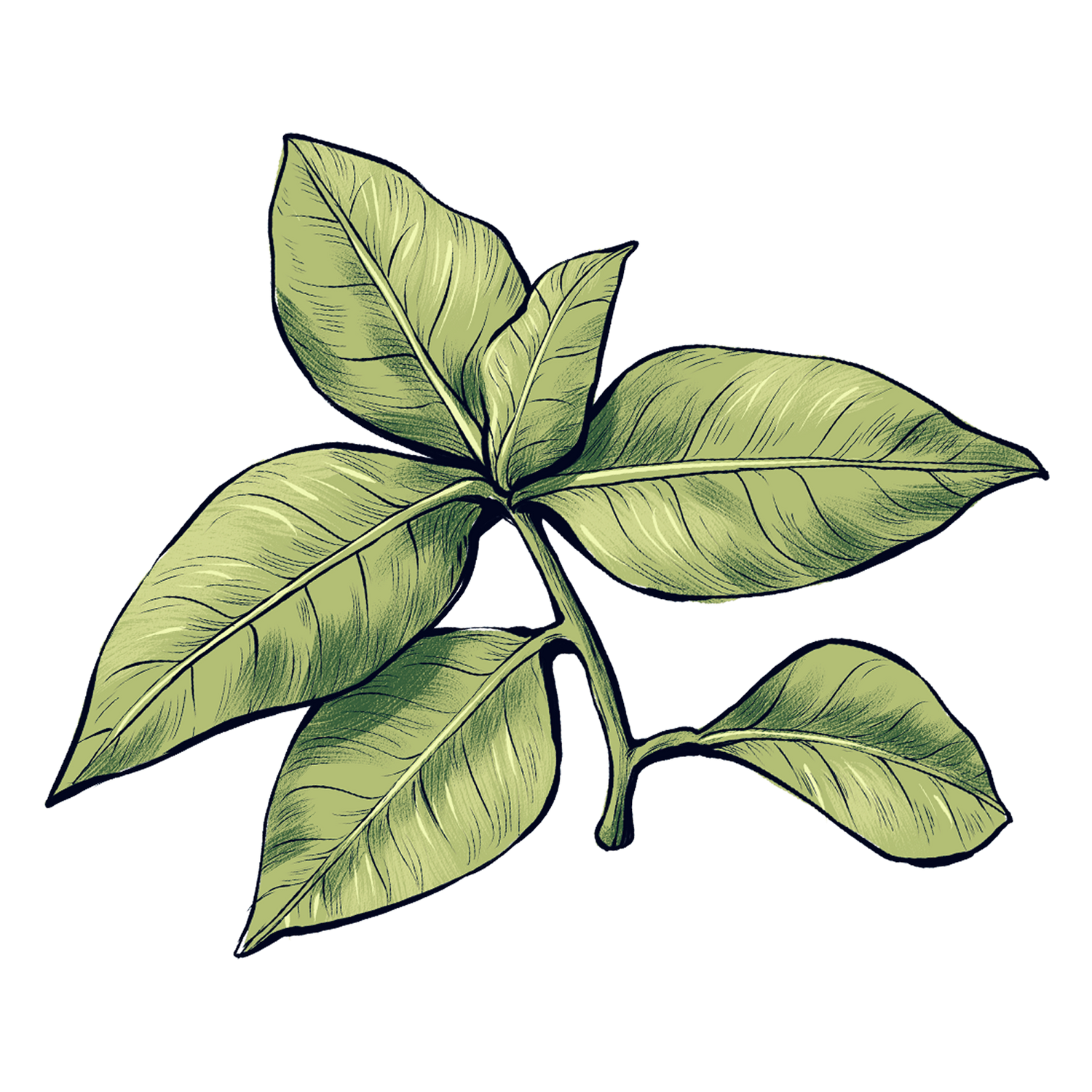
IXBUT
Ixbut has been used by the indigenous populations of Central America to stimulate milk production in humans and cattle for centuries. It's traditionally served as an herbal tea due to its light, nutty flavor.14
Fun Fact: The word "ixbut" had its origin in the early Mayan language of the Pokom people. "Ix" meant woman, while "but" stood for an increase in the flow of liquid. Hence the implication that the plant ixbut increased the volume of liquid (i.e. milk) in women.15
The Science: A study carried out among 86 postpartum women showed a 62% increase in milk production. In subsequent studies among 1,800 women struggling with breastfeeding, 50% indicated they could not nurse at all without ixbut, 35% showed a notable improvement in milk production with ixbut, and 15% showed no benefit.16
Used in Tea-Tas
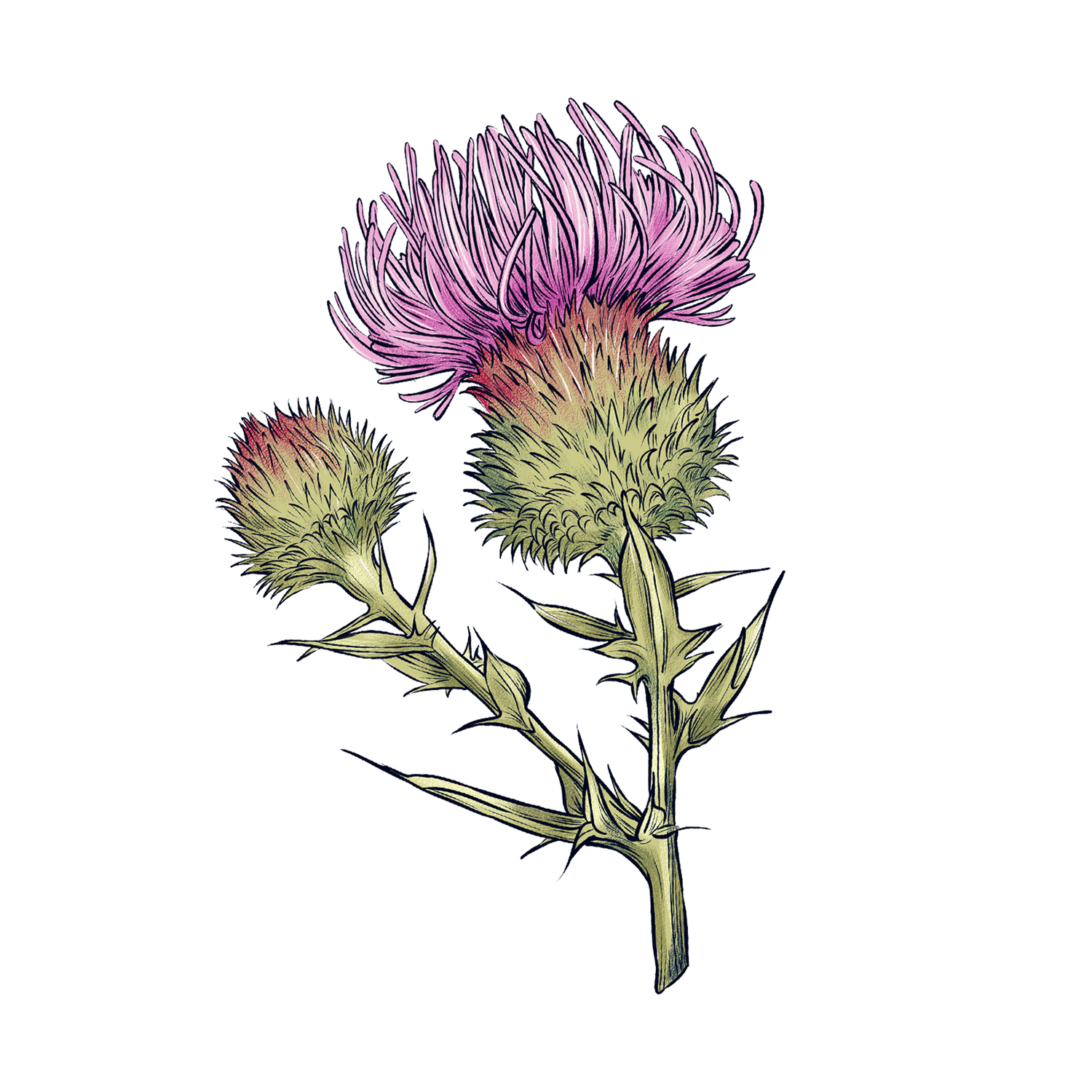
MILK THISTLE
While it’s best known for its liver-protecting effects, in recent years milk thistle has been reported to have a milk-boosting benefit. It may work by promoting the release of prolactin (the major milk-making hormone).17
Fun Fact: Early Christian lore holds that the white leaf veins of the plant are a symbolic representation of the Virgin Mary’s breastmilk, hence the common names of milk thistle or St. Mary’s thistle.
The Science: In lactating women treated for 63 days with milk thistle, milk production increased by 85%.18
Caution: Don’t use it if you’re allergic to the Compositea or Asteraceae families (daisies, artichokes, kiwi, ragweed).
Used in Liquid Gold
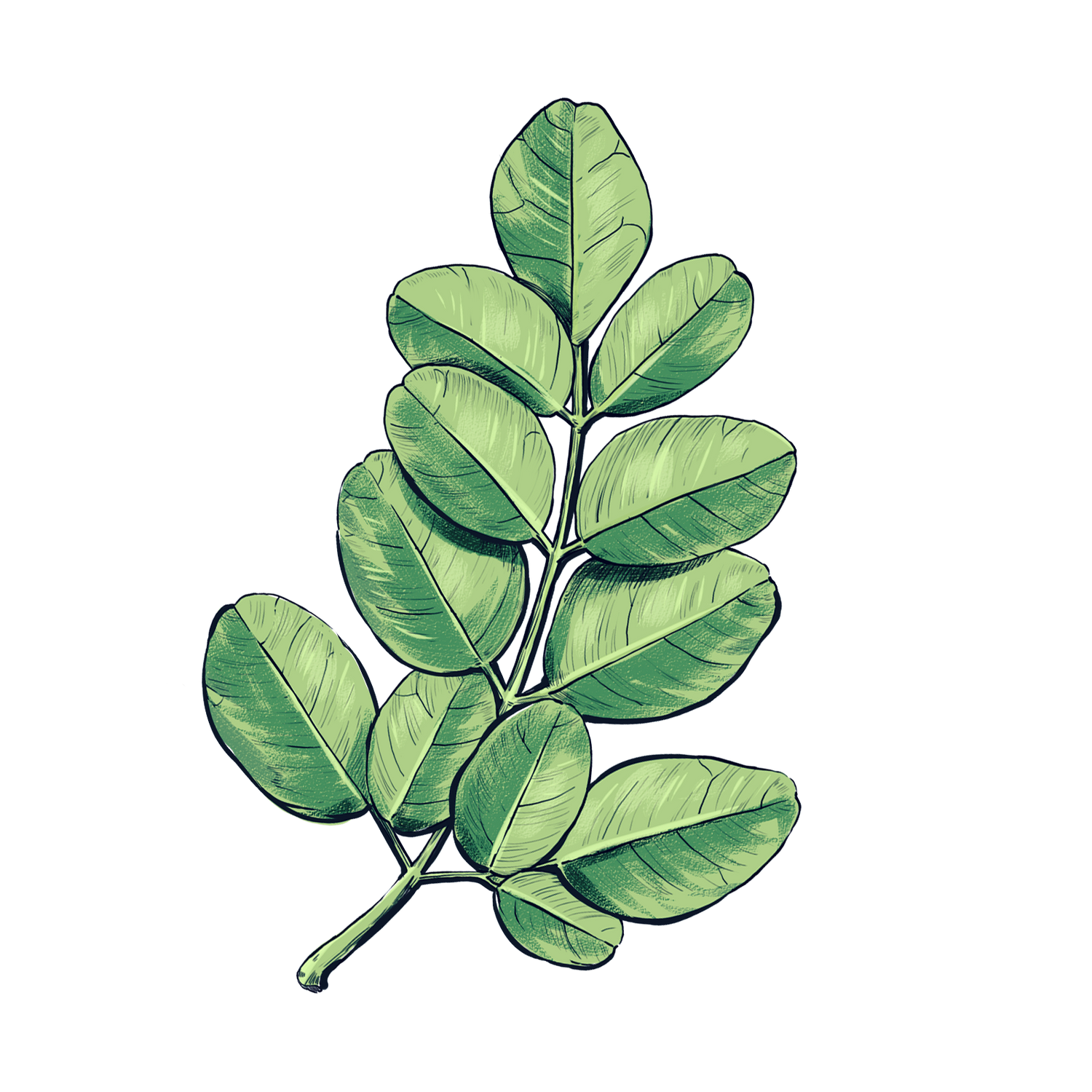
MORINGA
Moringa is a nutritional powerhouse native to Asia that has been shown to increase milk production within just a few days of taking it. It’s believed to work by boosting prolactin levels (the major milk-making hormone).19
Fun Fact: 100 grams of dried moringa has 9x the protein in yogurt, 17x the calcium in cow’s milk and 24x the iron in spinach.
The Science: In a double-blind, randomized trial of near term pregnant women, the moringa group produced 152%-176% more breastmilk compared to the placebo group just 2 days after delivery.19
Caution: It can lower blood sugar – if you’re diabetic or hypoglycemic, consult your doctor.
Used in Milkapalooza and Cash Cow

SHATAVARI
Shatavari has its origins in India and is popular as a restorative tonic for various female health issues. Its role as a galactagogue has been mentioned in several ancient Ayurvedic texts. It has been known to stimulate mammary gland growth and increase milk production.20 It has been compared to Reglan for treating gastric problems and it appears to cause a similar increase in prolactin.
Fun Fact: It translates to "she who has a hundred husbands" in Sanskrit due to its beneficial effects on a woman's reproductive function.
The Science: In a double blind, randomized trial of women with lactation inadequacy, the use of powdered shatavari root for 30 days resulted in a 33% increase in prolactin levels and an increase in the weight of the babies in the shatavari group compared to the control group.20
Caution: Not safe for use during pregnancy.
Used in Liquid Gold and Milkapalooza
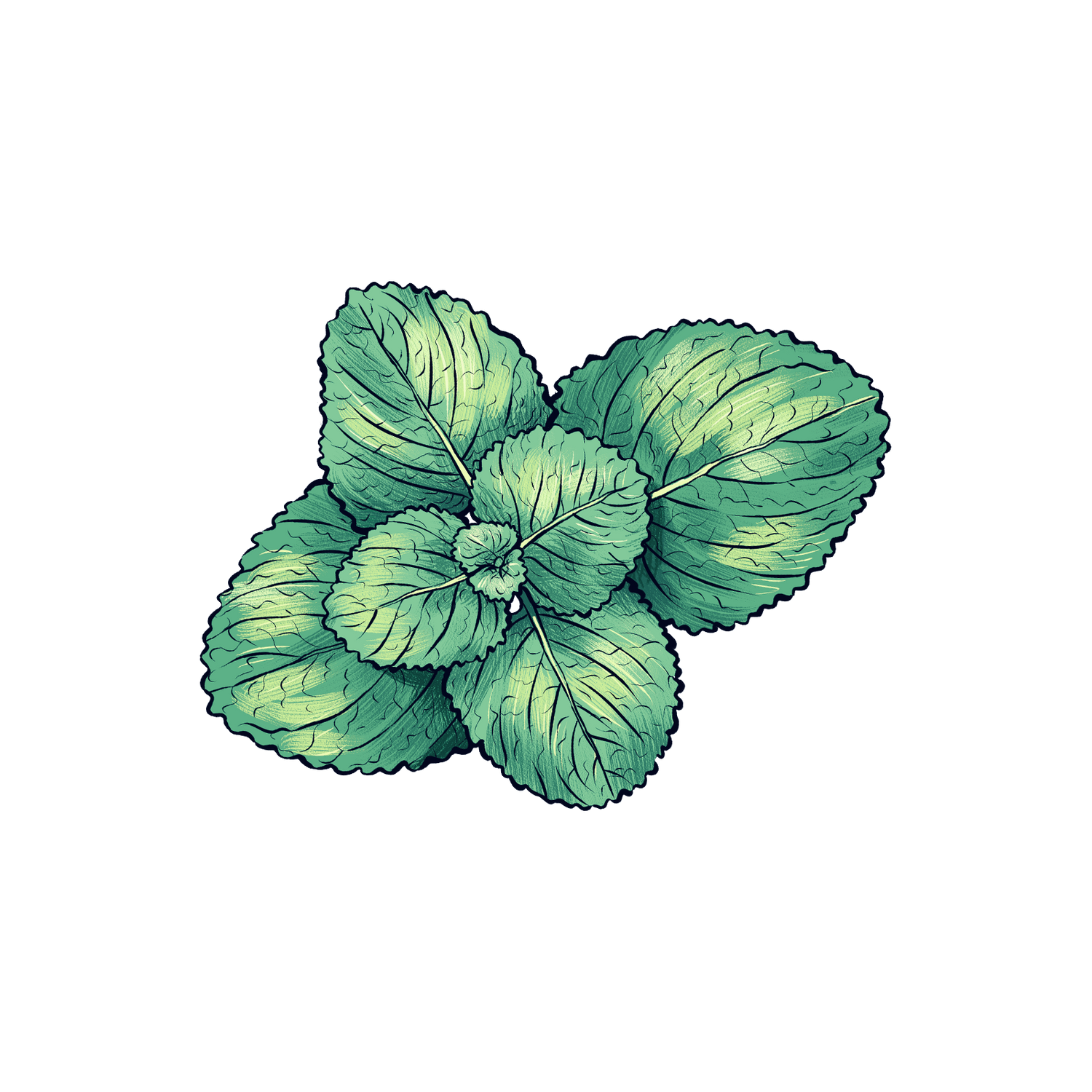
TORBANGUN
In Indonesia, torbangun is used as a traditional food to stimulate lactation for the month or so following childbirth. The leaves are commonly consumed by mothers who have given birth in North Sumatra, in particular the Batak tribe because the plant is high in iron, potassium, calcium and magnesium.21
Fun Fact: The mild chili-like (mint) taste of the leaves may represent 'Yang' in the Yin-Yang Theory, and could counteract the 'Yin' conditions of childbirth due to loss of blood and energy. According to the results of one study, the participants all agreed that the consumption of torbangun leaves helped with postpartum fatigue and restored their vitality. The word "bangun" even means "wake up."22
the science: In one parallel, randomized clinical study, three groups of 25 women each were given fenugreek, torbangun or B12 for 30 days. The torbangun group experienced a 65% increase in breastmilk volume in the last 2 weeks of the study. This increase was much higher than with the groups receiving B12 or fenugreek which were only 10% and 20%, respectively.23 The researchers theorized that the increase in milk production may be due to the maintained level of prolactin levels in the torbangun group over a 2 month period. 24
Caution: Not for use during pregnancy. It can lower blood sugar – if you’re diabetic or hypoglycemic, consult your doctor.
Used in Lactivist
References
- The Breastfeeding Mother's Guide to Making More Milk. Diana West and Lisa Marasco. 2009.
- Mother Food: Food and Herbs that Promote Milk Production and Mother’s Health. Jacobson, H. 2004.
- Review of Pharmacological Properties and Chemical Constituents of Pimpinella anisum.
- Journal of Acupuncture and Meridian Studies.
- Maternal supplementation of diabetic mice with thymoquinone protects their offspring from abnormal obesity and diabetes by modulating their lipid profile and free radical production and restoring lymphocyte proliferation via PI3K/AKT signaling
- How Nigella sativa Seeds Treat Diabetes and Ameliorates Diabetes Complications and Safety Studies: An Over View
- Galactagogue action of Nigella sativa seeds.
- Effect of Aqueous and Ethanolic Extracts of Nigella sativa Seeds on Milk Production in Rats.
- Foeniculum vulgare Mill: A Review of Its Botany, Phytochemistry, Pharmacology, Contemporary Application, and Toxicology.
- A randomized double-blind placebo-controlled trial of a standardized extract of Matricariae recutita, Foeniculum vulgare and Melissa officinalis (ColiMil®) in the treatment of breastfed colicky infants.
- Breastfeeding: A Review of Its Physiology and Galactogogue Plants in View of Traditional Persian Medicine
- Experimental study of goat’s rue (Galega Officinalis L.) herb and its liquid extracts
- Efficacy of a galactogogue containing silymarin-phosphatidylserine and galega in mothers of preterm infants: a randomized controlled trial
- Pharmacological Overview of Galactogogues.
- A neglected mayan galactacogue: Ixbut (Euphorbia lancifolia).
- Plants of Semillas Sagradas: An Ethnomedicinal Garden in Costa Rica.
- Silymarin BIO-C, an extract from Silybum marianum fruits, induces hyperprolactinemia in intact female rats.
- Safety and Efficacy of Galactogogues: Substances that Induce,Maintain and Increase Breast Milk Production.
- A double-blind, randomized controlled trial on the use of malunggay (Moringa oleifera) for augmentation ofthe volume ofbreastmilk among non-nursing mothers of preterm infants.
- A Double-Blind Randomized Clinical Trial for Evaluation of Galactogogue Activity of Asparagus racemosus Willd
- Levels of Apigenin and Immunostimulatory Activity of Leaf Extracts of Bangunbangun (Plectranthus Amboinicus Lour)
- Journal of Human Lactation.
- Lactagogue effects of Torbangun, a Bataknese traditional cuisine.
- Handbook of Dietary and Nutritional Aspects of Human Breast Milk. Sherma Zibadi. 2013.
